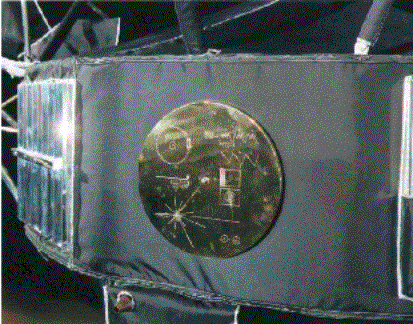

Figure 1 Cover of the Voyager Record on Voyager. (Source: "Voyager's Interstellar Outreach Program" at http://vraptor.jpl.nasa.gov/voyager/record.html)

Similarly, the computer stores numbers using the Integer Storage module binary or base 2 number system which only has only two binary digits, 0 and 1. The long strings of bits in the binary number system of the computer are difficult for people to read. Imagine writing programs with only 0's and 1's in the days before high-level languages! To keep insanity from setting in, we use the hexadecimal number representation as an abbreviation.
While the binary number system has two digits and the hexadecimal
system 16, the decimal or base 10 number system that we use every day has 10
digits, 0 through 9. To understand binary representations, let us first consider
the decimal number 5863, five thousand eight hundred sixty-three. The number
consists of 5 thousands, 8 hundreds, 6 tens, and 3 ones. In expanded form, we
have
5863 = 5 (1000) + 8 (100) + 6 (10) + 3 (1)
Notice that 1, 10, 100, and 1000 are all powers of 10: 100, 101, 102, 103, respectively.
Thus, we could write
5863 = 5 (103) + 8 (102) + 6 (101) + 3 (100)
We represent numbers in base 2 similarly; but there are only 2 digits ( 0 and 1); and the expansion is in powers of 2, not 10. Hence, in the binary number 1101, rightmost number, 1, indicates the number of 1's; the 0 to the left indicates the number of 2's; the next 1 represents the number of 22's or 4's; while the leftmost 1 gives the number of 23's or 8's. The expansion reveals the decimal or base 10 representation of the number.
(23) + 1 (22) + 0 (21) + 1 (20)
= 1 (8) + 1 (4) + 0 (2) + 1
= 8 + 4 + 0 + 1
= 13
Thus, 1101 in binary is 13 in decimal. When there is a possibility of confusion, we will write the base as a subscript to the number, such as 11012 and 1310.
|
Definition
The binary or base
2 number system has two digits, 0 and 1. Reading a binary integer
from right to left, the bit gives the number of units (20's),
21's, 22's, 23's, ...
|
|
|
||
|
Zero is the smallest unsigned integer that we can express in four bits, as 0000. The largest such number is 11112 = 23 + 22 + 21 + 20 = 8 + 4 + 2 + 1 = 15. Thus, we can express 16 integers, from 0 through 15, in four bits. As Figure 2 illustrates, the hexadecimal or base 16 number system is an abbreviation for the binary system.
Figure 2 First 16 nonnegative integers
with decimal, binary, and hexadecimal representations
|
Decimal
|
Binary
|
Hexadecimal
|
|
Decimal
|
Binary
|
Hexadecimal
|
|
0
|
0 |
0
|
8
|
1000
|
8
|
|
|
1
|
1 |
1
|
9
|
1001
|
9
|
|
|
2
|
10 |
2
|
10
|
1010
|
A
|
|
|
3
|
11
|
3
|
11
|
1011
|
B
|
|
|
4
|
100
|
4
|
12
|
1100
|
C
|
|
|
5
|
101
|
5
|
13
|
1101
|
D
|
|
|
6
|
110
|
6
|
14
|
1110
|
E
|
|
|
7
|
111
|
7
|
15
|
1111
|
F
|
In the binary or base 2 system we have 2 digits, 0 and 1; and in the decimal or base 10 system there are 10, 0 through 9. Similarly, in the hexadecimal or base 16 system, we must use new symbols to arrive at the 16 hexadecimal (hex) digits: 0, 1, 2, 3, 4, 5, 6, 7, 8, 9, A, B, C, D, E, F. Conversion from hexadecimal to decimal involves the same procedure as conversion from binary to decimal, except the expansion is in powers of the base, 16, instead of powers of 2.
|
Definition
The hexadecimal or base
16 system has 16 hexadecimal (hex) digits: 0, 1, 2, 3, 4, 5,
6, 7, 8, 9, A, B, C, D, E, F.
|
Example 1. To express the hexadecimal unsigned integer 5C with
the equivalent decimal number, we must convert the hexadecimal digits to
decimal numbers as well as expand: A-> 10,
B -> 11,
C -> 12,
D -> 13,
E -> 14,
F -> 15.
Thus,
5C = 5(161) + 12(160)
= 5 (16) + 12 (1)
= 92
|
|
||
|
Express the binary numbers in Exercises 1-9 in the decimal number system.
| 1. | 111 | 2. | 1011 | 3. | 1000 | ||
| 4. | 1111 | 5. | 10010 | 6. | 110001 | ||
| 7. | 111101 | 8. | 1000000 | 9. | 10011010 |
Express the hexadecimal numbers of Exercises 10-15 in decimal notation.
| 10. | E2 | 11. | 987 | 12. | FFF | ||
| 13. | A4 | 14. | CDD3 | 15. | 4E8 |
16. Express the hexadecimal numbers from Exercise 10-15
in binary notation.
Copyright � 2002, Dr. Angela B. Shiflet
All rights reserved